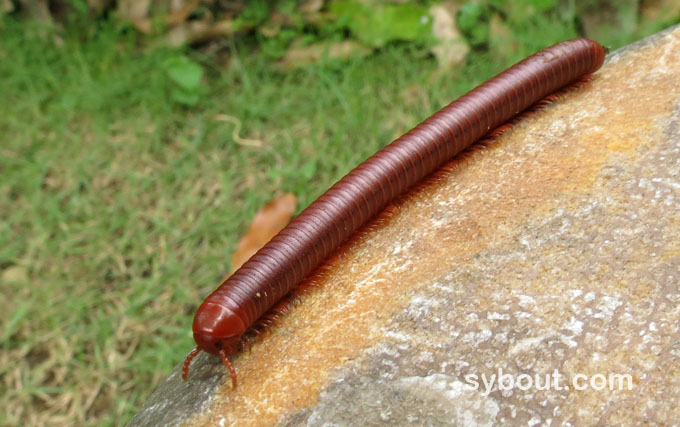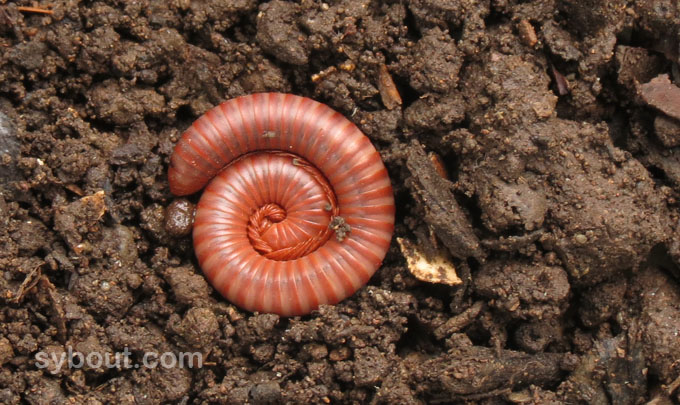Rusty Millipede
Latin: Trigoniulus corallinus
Family: Trigoniulidae
Order: Spirobolida
Class: Diplopoda
English: Rusty Millipede
Indonesian: Kaki Seribu, Luwing


Most millipedes I discover when I mix compost in the pile in a corner of my back yard. As these animals live on rotting plants, this is not a surprise. As soon they are disturbed they curl up. It seems this is to protect their relatively soft
under parts.
Millipedes generally have two pairs of legs on each body segment. The legs point down at the ground. Though the name suggest that this animal has 1000 legs, the actual number is far less.
It is nice to observe a millipede walking: it looks like its legs move in waves.
Millipedes don't bite, but can release a bad smelling fluid. In some cases this causes irritation or burning of the skin.
Centipede (species not yet identified)
Latin: ??
Family: ??
Order:
English: Centipede (species not yet identified)
Indonesian: Lipan, Kelabang

If I move flower pots or logs in my garden, I often find centipedes.
When disturbed centipedes immediately run away. They do not curl up like millipedes.
Centipedes have their legs sticking out to the slide of their body. Each body segment generally has only one pair of legs. The name centipedes means "100 legs". As you can see in the picture, the name is not in line with the real number: the centipede in my garden has far less than 100 legs.
Centipedes are predators and can deliver venom through hollow fangs. This makes their bite painful.